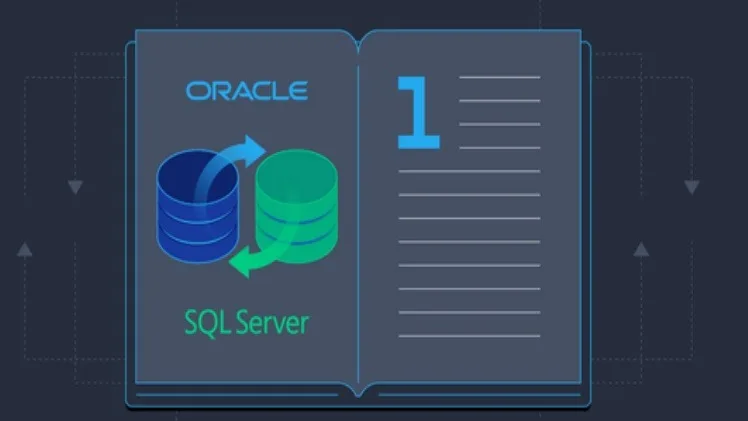Introduction:
Migrating from Oracle to SQL Server is a critical undertaking for businesses seeking to enhance their data management capabilities and optimize their infrastructure. SQL Server, Microsoft’s powerful relational database management system, offers a range of features and benefits that make it an attractive choice for businesses of all sizes. In this article, we will explore the process of migrating from Oracle to SQL Server and highlight the advantages that SQL Server brings to the table.
Understanding SQL Server:
Before delving into the migration process, it is essential to understand what SQL Server is. SQL Server is a robust relational database management system developed by Microsoft. It is designed to store, process, and manage large volumes of data efficiently. SQL Server is renowned for its performance, scalability, security, and ease of use, making it a preferred choice for businesses worldwide.
Assessing the Migration Scope:
The first step in the migration process is to assess the scope of the data to be migrated. This involves understanding the database schema, data types, and the volume of data to be moved. A thorough assessment will help identify any potential challenges and ensure a smooth migration process.
Choosing the Right Migration Approach:
There are various approaches to migrating from Oracle to SQL Server, and the choice of approach depends on factors such as data complexity, time constraints, and budget considerations. Businesses can opt for manual migration, using ETL (Extract, Transform, Load) tools, or leveraging specialized migration services.
Data Preparation:
Before initiating the migration, data preparation is crucial to ensure a successful transfer. This involves cleaning the data, handling any schema differences between Oracle and SQL Server, and ensuring data integrity. Proper data preparation is a critical step to avoid errors and discrepancies in the migrated data.
Establishing Connectivity:
To facilitate data transfer, establishing connectivity between Oracle and SQL Server is essential. This can be achieved using various methods, such as ODBC (Open Database Connectivity) drivers or native connectors provided by SQL Server.
Data Migration:
With the necessary preparations and connectivity in place, the actual data migration can begin. Depending on the chosen approach, data can be moved in batches or through continuous replication. It is advisable to conduct thorough testing during this phase to verify data accuracy and completeness.
Validating and Testing:
After the migration, validating the data in SQL Server is vital to ensure its accuracy and completeness. This involves running queries, comparing results with the source database, and addressing any discrepancies. Rigorous testing helps identify and resolve issues before the data is put to use.
Optimizing Performance:
SQL Server offers various optimization features that can be leveraged to enhance data storage and query performance. This may involve creating appropriate indexes, partitioning data, and fine-tuning configurations to ensure optimal performance.
Benefits of Migrating to SQL Server:
Migrating from Oracle to SQL Server offers several benefits for businesses:
- Cost Savings: SQL Server’s licensing and pricing options can often be more cost-effective, especially for businesses already invested in the Microsoft ecosystem.
- Seamless Integration: SQL Server seamlessly integrates with other Microsoft products, such as Azure services, Power BI, and Microsoft Office applications, streamlining workflows and enhancing collaboration.
- High Performance: SQL Server’s advanced query optimization and indexing capabilities enable high-speed data processing, resulting in faster analytics and reporting.
- Scalability: SQL Server’s scalable architecture allows businesses to handle increasing data volumes and user loads without compromising performance.
- Robust Security: SQL Server prioritizes data security and offers comprehensive encryption, access control, and auditing features to safeguard sensitive information.
- Comprehensive Support: SQL Server benefits from Microsoft’s extensive support and frequent updates, ensuring ongoing maintenance and enhancements.
Challenges and Considerations:
While migrating from Oracle to SQL Server offers numerous advantages, it is essential to be aware of potential challenges and considerations. Businesses should be prepared to address the following aspects during the migration process:
- Data Compatibility: Oracle and SQL Server have different data types and structures. Ensuring compatibility between the two databases may require data transformation and mapping to avoid data loss or inconsistencies.
- Application Code Modification: If the existing applications are tightly coupled with Oracle-specific syntax and features, they may require code modification to adapt to SQL Server’s syntax and functionalities.
- Performance Tuning: As the migrated database grows in size, performance tuning becomes crucial to maintain optimal query response times and overall system performance.
- Data Security and Privacy: Migrating sensitive data requires careful attention to data security and privacy compliance to adhere to industry regulations and protect sensitive information.
- Downtime Management: Organizations must plan and manage downtime during the migration process to minimize disruption to critical business operations.
- Data Validation and Verification: Rigorous data validation and verification processes should be in place to ensure that the migrated data is accurate and consistent.
Post-Migration Activities:
Once the migration is complete, there are essential post-migration activities to undertake:
- User Training: Providing training and support to users and developers on SQL Server’s features and tools will help them leverage its capabilities effectively.
- Performance Monitoring: Regular monitoring of SQL Server’s performance and resource utilization is crucial to identify and resolve performance bottlenecks.
- Backup and Recovery: Implementing a robust backup and recovery strategy is vital to safeguard against data loss and ensure business continuity.
- Security Review: Conducting a security review of the new SQL Server environment helps ensure data remains protected and secure.
- Regular Maintenance: Scheduling regular maintenance tasks, such as index rebuilding and database backups, helps keep the database running smoothly.
Conclusion:
Migrating from Oracle to SQL Server is a transformative journey that can propel businesses towards more efficient data management and advanced analytics. With a comprehensive understanding of SQL Server’s features and the right migration approach, organizations can smoothly transition their data and applications to a more scalable, performant, and cost-effective platform.
By embracing SQL Server’s powerful capabilities, businesses gain the flexibility and agility needed to thrive in a data-driven world. Proper planning, data preparation, and rigorous testing are essential for a successful migration. The benefits of cost savings, seamless integration, high performance, scalability, security, and comprehensive support position SQL Server as an optimal choice for businesses seeking to elevate their data infrastructure.
As a third-party perspective on the migration process, this article highlights the significance of a well-structured approach to achieve a seamless and successful migration from Oracle to SQL Server. The journey to SQL Server opens new possibilities for businesses, empowering them to unlock valuable insights, enhance decision-making, and accelerate growth in the dynamic landscape of modern data management.



